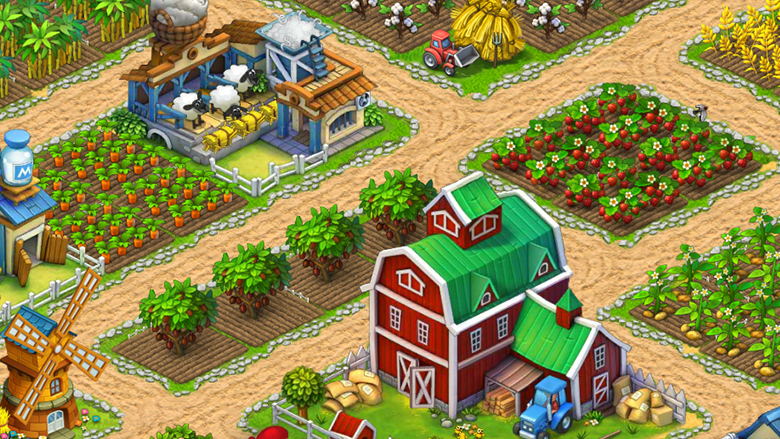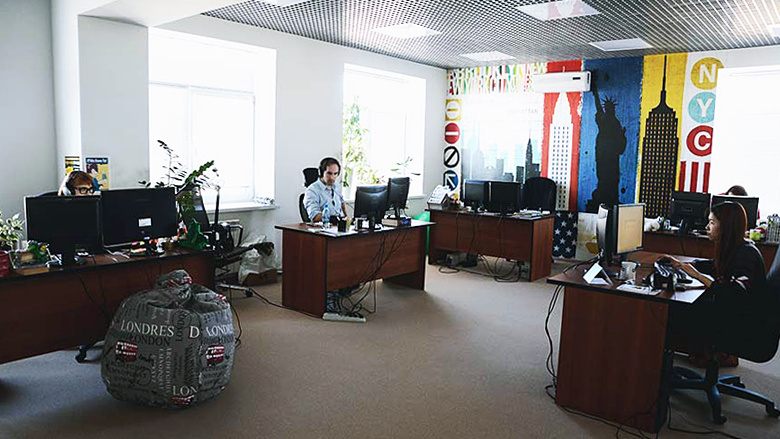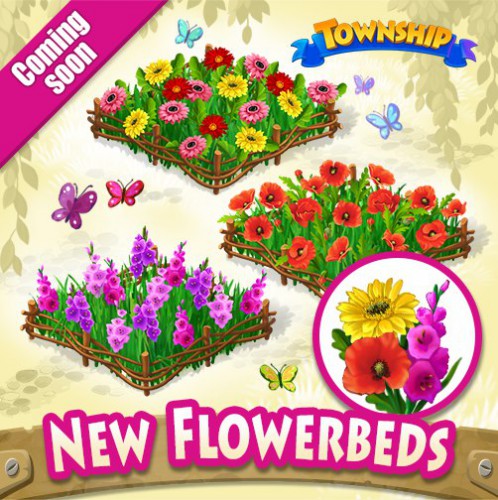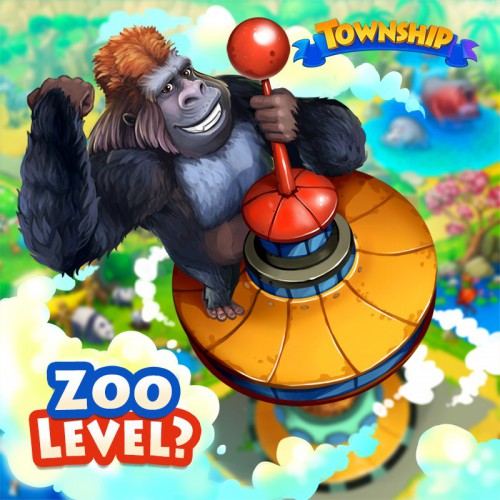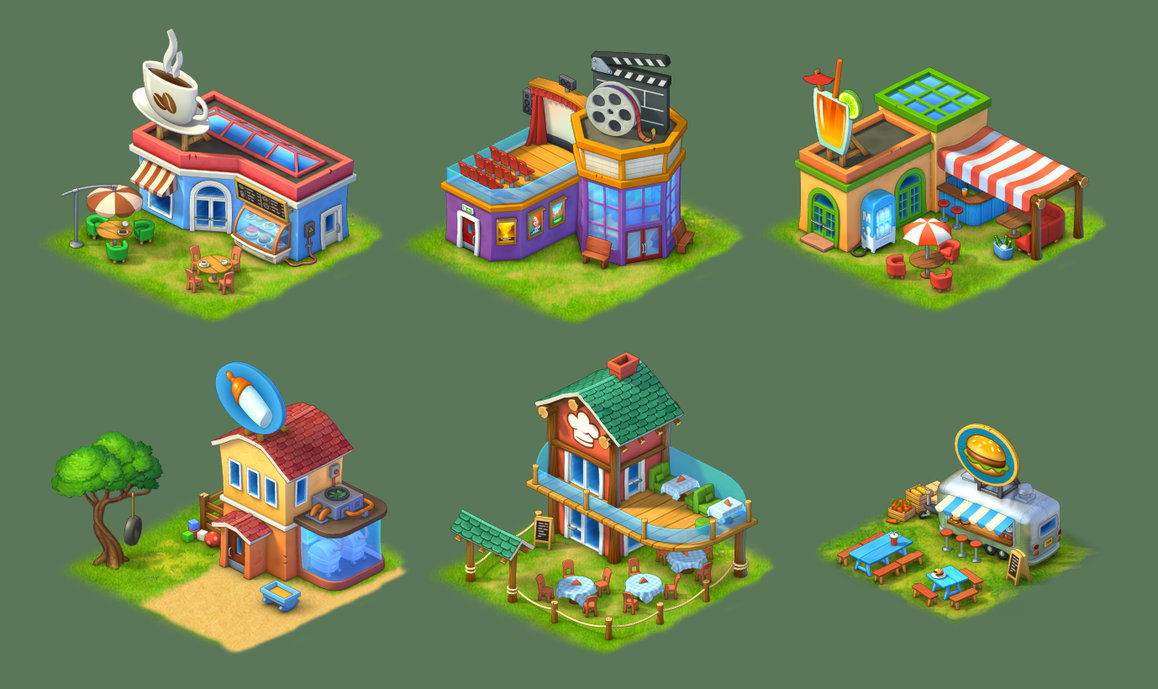The authors of Township told about the creation of the project, about how work with remote employees is built, and also shared the history of the launch in China.

The questions were answered by Igor Elovikov, creative director of Playrix.
Hi! I’ll start with a theoretical question: what is the difference between farms and builders?
Hello. I don’t share these genres. This is a matter of setting. Our Township, for example, is mostly a farm. But we position it as a mix of a city builder and a farm.
If so, what changes in the genre would you highlight in recent years?
There are changes. Many are trying to do something. Someone introduces elements of adventure: a global map of island travel, for example. The developers are trying to leave the skeleton, but distance themselves from Hay Day.
I want to say that there is a basic mechanics – cultivation and processing, and around it something is constantly coming up, increasing. Here, in fact, there is still a great potential on the basis of which you can create something of your own.
But these long chains – “I grew a carrot, added bread, turned out a pie” – have appeared for a long time?
Look, the same Hay Day is similar to the browser-based German Farmerama. Farmerama is a very old game. She is about 10 years old.
Supercell quite consciously took a successful browser product and adapted it perfectly. Farmerama and Hay Day are very similar, right down to the entourage. There’s the same order board, there’s a truck driving too. And there were already these same chains of orders.
Finns, in principle, do not hide that they drew inspiration from there.
Because of Hay Day, everyone is trying to implement chains today. We can say that this is a trend, but chains appeared a long time ago.
Hay Day was just able to convey them well in the gaming sensations. For example, dragging is not some abstract manipulation with a huge list, but a specific action of the player, his direct participation in the process. It seems to be a simplification, but a plus.
Moving on to the Township. When you first started thinking about the project, did you start from Farmerama or from Hay Day?
It was a very complex evolutionary process. Initially, there was a Township on Facebook, which we did a long time ago. There we started primarily from casual time managers. They also had production chains, but very simple.
Like FarmVille?
No.
You grow tomatoes, and each factory, in fact, is engaged in processing one product into another. You make sauce out of tomatoes, for example, and milk out of clover. There are no recipes as such, there is a transformation of one unit of the product into another unit, more expensive.
It worked on Facebook, everything went well, the Township showed good results there.
Then we started making a mobile version of it. In fact, they ported one to one.
Closer to the release of the game, Hay Day came out, and we realized that our game would be uncompetitive. As a result, we totally redesigned the game, starting from the principles of Hay Day.
In fact, before the alteration, we already had everything ready: factories where you can grow everything, all the content, but we decided to go the way of Hay Day and complicate it.
And how much time did the processing take in total?
It was winter, the turn of 2012 – 2013. We were supposed to release the game in the winter, but due to alterations, we restarted it in June 2013 as part of the softlonch. In November-October of the same year, a full-fledged release took place.
That is, five months took a complete “shake-up” of all the mechanics, then another softlonch three or four months, and then the release. That adds up to eight months.
Quickly. In this regard, here is the question, until we run further. Playrix works very unconventionally on projects: you have a lot of outsourcing, there is a special emphasis on this. Although outsourcing is a problem for many. How did you solve it for yourself? That is, if you can throw out a quality product so quickly, it means that you have solved this problem.
I must say right away that we do not work with outsourcers, but with remote employees of the company. There is a big difference here. Yes, these are all people from completely different cities, but they officially work on the staff of our company on full-time.
We do not distinguish between a remote employee and an employee in the office. Generally. Everyone works on a convenient flexible schedule, everyone has the same system of white wages and vacations, everyone comes to corporate events.
Our similar position probably became the solution.
When most of the employees work remotely, isn’t that a saving for the company?
It’s not about saving exactly. The company, in addition to salaries, provides all people with equipment, all sorts of bonuses and other pleasant things, regardless of their location.
Here the profit is in another – it’s much easier for the company to find the right people, and for people to come to our company.
And how do you control it?
There is also a small set of rules, such as that a person should be available during working hours, etc., but there are really few of them and they are all based on common sense and personal responsibility.
We focus on what kind of result a person shows, and not on how many hours he sat at the same time. We rely on people who are interested in working, and not on those who need to be controlled.
It’s not suitable for everyone, but that’s how people work here, and a lot of key things are done by remote employees.
For example, it is believed that such a thing as code should be done internally, but we have a lot of remote programmers, and we are happy. Of course, the matter is not limited to programmers: game designers, QA, analysts, artists and even PM, in general, the whole range of game dev specialists are successfully working on the “remote”.
What percentage of the total number of employees work remotely?
About 50%, that is, about a hundred people. But, again, I want to note that these are full-time employees, not outsourcers.
Okay, we got sucked into HR. Let’s get back to the game. You have complicated the gameplay by the example of Hay Day, screwed up the chains (rye, flour, pie)… These long chains – it always seemed to me that this is more of a male theme. But we know that a solid part of the audience is female. How is the Township doing with this?
Township is a predominantly “women’s” game. About 70% of the audience are women.
Apparently, the thesis itself that such production chains can scare them away is wrong.
If we talk about the players – have you come across the fact that they, for example, draw tables in Excel, calculate?
There are such, of course. I know that Hay Day has a Wiki, and our game has one too. This is a certain category of players who are looking for how to hack the system, which product is the most profitable, how you can earn maximum money in a minute of playing time. But this is a more “masculine” topic. Women play differently.
Have you researched which players are the most paying? Those who are sitting in the “Wiki”, studying what is more profitable to spend a carrot on, or those players who came and they like cool graphics? Who pays more, who is better to focus on?
An interesting question. I would assume that the most active players are those who like the game, not those who study it deeply. That is, they are not the ones who sit in the “Wiki”. But that’s just my guess, we haven’t investigated it.
You have a new update on November fifth, there was a line in the description that users asked to add a bed with gladioli. But this does not affect the gameplay, that is, you will not collect these gladioli. If you make such a pie chart to compare user spending on useful things like timers and such things, is there a share of spending that falls on optional things like decorations, and how significant is it?
We don’t sell decorations. We are not trying to monetize them for real money: in our case, this does not work. It is gladioli that are not sold for cash. Nobody buys them. They are sold for a special currency. According to this scheme, people are ready to buy them – for game savings, they are interested in it. But people spend real money mainly on consumables, on acceleration, on skipping certain steps in production. But this can also be attributed to consumables. Consumables and acceleration, nothing else. Optional decorations, optional things are zero.
I have come across the opinion that the scenery is an essential part.
We have very expensive decorations. We position them as some kind of goals, so this decoration is worth 10 gold bars. To get them, you need to really work hard, sit in the game for a month. We tried to sell them for hard currency, we had cool unique decorations for this, but they didn’t bring anything. Therefore, we decided that we would not sell them for cash. So people buy much more willingly.
It probably depends on the genre. There are games where there is an avatar. And you buy some clothes, you often see other players. There you can monetize a unique appearance. In our case, the scenery is not something that you constantly demonstrate to other players, although there is an opportunity to visit friends. It’s something for yourself. Apparently, people are not particularly eager to buy digital decorations for real money, which few people will see except themselves.
How often is it desirable to release updates in order to maintain interest? And what do these updates have to include?
We try to release updates once a month. And, of course, it doesn’t work out all the time to put new mechanics in there. But the most profitable updates are updates with something really new. Our most recent update – with a zoo for the Township – is the most successful in financial terms. People are interested in adding new functionality or expanding it. This is the most important thing. We try to mix it competently with some purely cosmetic edits. We even have a Township team divided up. There are people who are engaged in “polishing” – it’s endless. All the time there are some improvements to the buttons, there is a constant review of the current interface, effects, sounds. And with each update we improve something.
But few people will notice the buttons.
Yes, but we don’t evaluate from this point of view.
The appearance of the Township has changed a lot since the launch. I do not know how to assess how much this has affected, but the results of the game are getting better and better, so we conclude that this is also some kind of contribution.
For example, there was a feeling that initially we made the graphics somewhat dim, so we are constantly redrawing something, making it brighter, neater.
You said that the most important, the most essential thing that adds interest to the player is new mechanics. Here’s the question: how do these mechanics fit exactly into the game cycle?
This is also a difficult question. You can probably tie the runner to the city builder. But we try to make the game look harmonious. First of all, we close everything to the basic mechanics – production. If we make a zoo, we will still design it in such a way that products that are made in the city are needed there.
Again, you can draw an analogy with Hay Day. They have a new area – the city.
We decided to do something similar.
We lock everything into products in such a way that everything resembles the same mechanics, so as not to end up with a dissonant runner or match-3. It’s not very difficult to screw in new mechanics, it’s difficult to make everything look harmonious.
Our main gameplay is grown, reworked, got something. Then you distribute what you got according to the game. In a zoo, you sell products to visitors, visitors give a rating, a rating opens up the opportunity to buy new animals, you buy new animals for aesthetic satisfaction. And so on in a circle.
Are there more zoo visitors with the appearance of new animals?
No, visitors are a convention. The cycle does not close on visitors. New animals open new buildings – cafes, souvenir shops, fast food. It’s like a game where every building has a drain, a warehouse. And you just need to fill it in so that it functions and brings a rating, it is busy all the time.
You have resources produced by one territory – the base city. And they are being spent all the time. The base amount of resources is not constantly increasing. Can’t there be some kind of imbalance when there are a lot of territories, all require resources, and it is physically problematic to improve other things?
We don’t want to add more territories because, in our opinion, this is a dead end. In principle, it is desirable to make do with one territory. That is, the introduction of a zoo is a forced measure. It was already impossible to add anything else to the city, so we decided to introduce a zoo, but then we will only develop what we have, without expanding anything.
We are closely watching how people play after the appearance of the zoo. For example, the development of the city itself inevitably slows down. Globally, we regulate everything in such a way that all resources are exchanged for money and experience, no matter where you do it. In the end, you’ll just exchange them for progress at the zoo or in the city, but you’ll get money and experience anyway. There is a certain formula, everything is calculated. You can load the product on a train, in a helicopter, on an airplane or give it to the zoo. You just choose what to do. And the number of such elections should be unlimited. The system balances itself, roughly speaking.
Experience allows you to open new buildings?
Yes. And new features. The zoo is available after a certain level. This is a fairly late feature. We purposely made it as far as possible, because there was a certain problem that the game was becoming very monotonous.
No one complained, but we ourselves understood that the players would get bored sooner or later. Therefore, the zoo has become a late feature. Of course, before that there was a ship and other things (not only buildings, but also some new mechanics), which enrich the game as the player develops.
Steering towards the end, where is the project successful today?
Let’s just say that the project is about as successful in Russia as in Europe. But in general, it is much more successful in the West. And, interestingly, he is very successful in China.
Can you tell us more about China?
We don’t know exactly why the game is so popular in China. There is no publisher, but this did not prevent gradually rising in the top. Slowly, but surely and high. Township is now the fourth non-Chinese top grossing game after Hearthstone, Clash of Clans and Boom Beach. At the moment, China is the second market for us in terms of profitability after the United States.
Did you just post Township in all Chinese stores?
Only on iOS. We are preparing a release for Android this year together with a partner, but it’s too early to talk about details yet.
We are now trying to further expand in Asia, because if the game is popular in China, why shouldn’t it be popular in Korea?
Moreover, we have already launched it in Korea and at first we got very good results. But then the game gradually dropped, which, in fact, is uncharacteristic for the Township. There were technical problems and there is a feeling that we fell short somewhere. In addition, we worked with a partner there, and when there is no direct control over all the components of the game, it is more difficult to eliminate any problems.
Are you thinking of going out yourself now?
Yes, but this time, maybe without integration with Kakao, as it was the first time. It is usually said that there is no integration – there is no success. But I don’t know. We’ll try. In China, they just came out. There is no integration with WeChat or anything else. There’s just a game translated into Chinese. Basically, everything. There is no special adaptation there. There is no consideration of cultural peculiarities.
Visually, it looks expensive.
Yes, visually expensive, and the style, I would say, does not belong to any culture. That is, anyone may well like it.
Alexander Semenov talked
Deciphered by Irina Smirnova

